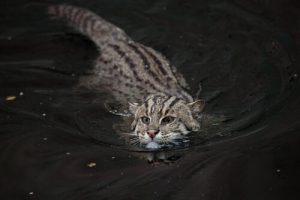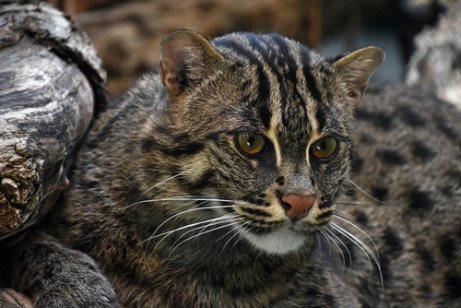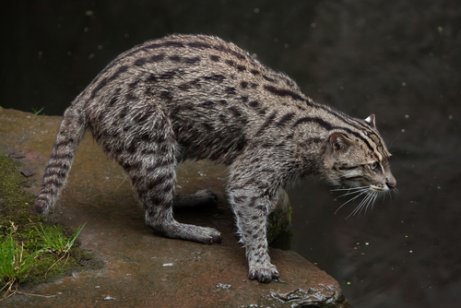Fishing Cats, A Feline In Danger of Extinction

Have you always believed that cats don’t like water? Well, today you will learn about Fishing cats. Just as their name suggests, these animals primary feed on fish. The Prionailurus viverrinus lives in Southeast Asia and they’re in danger of extinction, mainly due to the destruction of their environment.
Countries Where Fishing Cats Live
This small feline is found in different areas in India, but mainly in the northeastern region. They also live in the foothills of the Himalayas in Nepal. They also live in the Indus Valley of Pakistan. Other places Fishing cats inhabit are:
- Bangladesh
- Sri Lanka
- Sumatra and Java (islands in Indonesia)
- Bhutan
- Malaysia
- Thailand
- Vietnam
- Cambodia
- Myanmar
- China
These animals are usually found in wetland areas such as marshes, oxbow lakes, tidal streams, and mangroves, and up to an altitude of 1,500 meters.
The Fishing cat is a small feline that lives in south and southeast Asia. This animal is in danger of extinction because of the destruction of the wetlands they live in.

Physical Traits
Some people associate the pattern on Fishing cats’ legs as an adaptation to their environment. However, their partially webbed paws aren’t more developed than other felines.
Other physical characteristics of the Prionailurus viverrinus are:
- Weight: Between 6 and 16 kilograms
- Size: measures between 66 and 86 cm between their head and body, females are smaller than males
- Body: long and robust
- Legs: relatively short
- Tail: Thick and short (about 30 centimeters)
- Head: wide
- Snout: elongated
- Coat: double layered with an olive-gray color. The cat has dark stripes along the neck and face, and brown spots along the body. Aslo, they have a series of incomplete rings around the tail.
Food and Reproduction
The fishing cat is a Solitary and primarily nocturnal animal that doesn’t only catch fish from the shoreline. They also are able to get in the water and swim, and even dive to catch their prey.
Fish are also not their only food source. They also eat:
- Frogs
- Crustaceans
- Snakes
- Birds
- Rodents
Experts believe that like domestic cats, Prionailurus viverrinus has the ability to reproduce throughout the year. The highest number of births ever recorded — at least in the northeast region of India — are recorded in March and May.
The Fishing cats’ gestation period lasts about 63 days. They can birth up to four cubs and breastfeed them for six months. Around the age of 10 months old, the young cubs are mature enough to become live on their own.

An Endangered Feline
The fishing cat has a life expectancy of 12 years and it’s in danger of extinction, despite the fact that many countries have placed them under protection.
This animal also appears as a vulnerable species on the red list of the International Union for the Conservation of Nature (IUCN). In addition, it is in Appendix II of the Convention on International Trade in Endangered Species (CITES) and you must have a permit to transport this animal internationally.
The main threats to this feline are:
- Destruction of wetlands (due to human settlements, land for farming, etc.)
- Poaching for several reasons (food, fur, etc.)
- Destructive and indiscriminate fishing, which drastically decreases their main food source.
This text is provided for informational purposes only and does not replace consultation with a professional. If in doubt, consult your specialist.